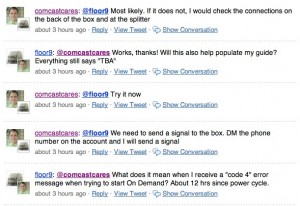As discussed recently in “Why Are We So Scared of Our Customers?” and “Presto, How Social Media Makes Bad News Good” I’m seeing the fear of negativity preventing more companies from embracing social media.
The typical social media objection is that if the company has a conversation with consumers in a public forum, the company will be forced to respond to inadequacies, and doing so will just make it worse. Consequently, many large brands are now engaged in social media “listening” campaigns, but not engaging with consumers directly.
Sometimes Letting Go Allows You to Steer
Of course, listening is better than ignoring, but actually getting involved with your customers online doesn’t  give you less control, it gives you MORE control. If you give customers a legitimate, easy-to-use mechanism for interacting with you and amongst themselves, a large component of the feedback about you is likely to end up within that mechanism. And then you can do something about it.
give you less control, it gives you MORE control. If you give customers a legitimate, easy-to-use mechanism for interacting with you and amongst themselves, a large component of the feedback about you is likely to end up within that mechanism. And then you can do something about it.
Consider Comcast. What is a better circumstance for the company, listening but not engaging while customers post videos like this (which you’ve probably seen since the original has been viewed 1.35 million+ times on YouTube), or engaging and actually encouraging customer feedback and complaint via Twitter (@comcastcares)? (read bottom up for killer customer service on Twitter from Frank Eliason at Comcast)

Control Via Facilitation
Dell has a Project RED application on Facebook. Within the forums, there are several consumer complaints about Project RED and how much it actually helps Africa, versus being a craven marketing ploy. While Dell itself doesn’t appear to be engaging in the dialog, it is facilitating the conversation (with other consumers defending Dell vociferously).
And because all of this is happening on an official Dell production, they have MORE control over it than if it was happening on a blog or some other Facebook page. They could comment officially. They could take down the forums. They could reach out privately to negative commenters.
If this conversation was taking place on some other blog, Dell’s options would be greatly curtailed.
Creating a mechanism for customer feedback using social media is the post-modern equivalent of the suggestion box. Brands that don’t do it because they don’t want to loose control don’t understand that facilitation provides control, it doesn’t eliminate it.

